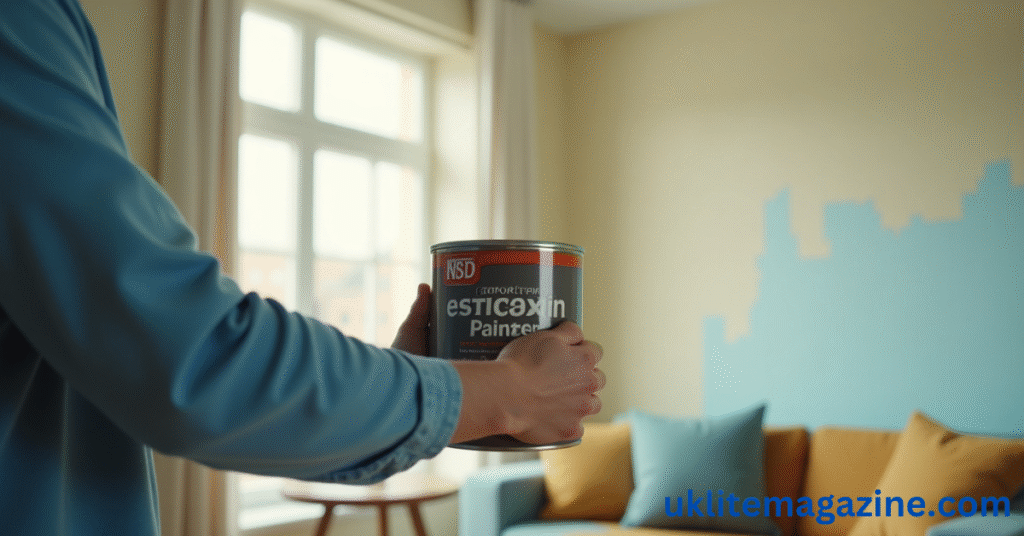Using paint in home projects seems straightforward—until you’re left wondering whether you can switch products like interior and exterior paint. One question many homeowners ask is: Can you use exterior paint inside? The answer isn’t as simple as a yes or no. This article breaks down the key differences, benefits, drawbacks, and expert advice you need before opening that can.
Understanding the Purpose of Exterior vs. Interior Paint
What Is Exterior Paint Made For?
Exterior paint is specially formulated to withstand outdoor elements like:
-
Rain
-
UV rays
-
Temperature changes
-
Mold and mildew
To achieve this durability, exterior paint includes additives like:
-
Flexible resins (for expansion and contraction)
-
Stronger pigments (to resist fading)
-
Mildew and fungus inhibitors
What Is Interior Paint Made For?
Interior paint is designed for indoor environments where surfaces don’t face harsh weather. It focuses on:
-
Smooth application
-
Low odor
-
Easy cleaning
-
Safety for indoor air quality
It lacks the tough additives that exterior paints include because indoor surfaces don’t need them.
Can You Use Exterior Paint Inside?
Technically, Yes—but Not Recommended
You can use exterior paint indoors in a technical sense—it will stick and cover the surface. However, it’s not advisable for health and safety reasons. Exterior paint gives off higher levels of VOCs (volatile organic compounds), especially when drying. These fumes can be harmful in enclosed indoor spaces, especially for children, pets, or those with respiratory conditions.
Pros of Using Exterior Paint Inside
-
Durability: It’s tough and long-lasting.
-
Moisture Resistance: Good for damp areas like basements or garages.
-
UV Protection: If your interior room gets a lot of sunlight, it can resist fading.
Cons of Using Exterior Paint Inside
-
Toxic Fumes: High VOCs can affect indoor air quality.
-
Strong Odor: The smell can linger for days or even weeks.
-
Not Meant for Interior Surfaces: It may not apply smoothly on indoor walls.
-
More Expensive: Exterior paint usually costs more.
-
Regulatory Issues: Some areas have legal restrictions on using exterior paint indoors.
Expert Advice: When Might It Be Acceptable?
According to painting professionals:
-
Avoid using exterior paint in bedrooms, kitchens, or living rooms.
-
If using in a garage or workshop, ensure good ventilation and consider water-based, low-VOC exterior paint.
-
Never use exterior paint on surfaces that children or pets might touch.
If durability is your main concern indoors, ask for interior paints with washable or scrubbable finishes instead.
Safer Alternatives to Using Exterior Paint Inside
-
Interior latex paint with mold/mildew resistance for bathrooms and kitchens.
-
Stain-resistant interior paints for high-traffic areas.
-
Chalk or enamel paint for furniture, rather than exterior wall paint.
Conclusion
While the idea of using one paint for everything might sound efficient, using exterior paint indoors comes with serious downsides. From harmful fumes to application issues, it’s best to stick with paint designed for the space you’re working in. If you’re ever unsure, ask a paint expert at your local store or consult a painting contractor. Prioritizing safety and quality will give you better, longer-lasting results.
Frequently Asked Questions (FAQs)
What happens if I use exterior paint inside?
Using exterior paint inside can expose you to harmful fumes from VOCs, especially in closed areas. It may also not adhere properly or give you the smooth finish you expect indoors.
What is the difference between exterior paint and interior exterior paint?
Exterior paint is made to handle weather, moisture, and UV rays, while interior paint focuses on cleanability, low odor, and safe ingredients for enclosed spaces. Some paints are labeled interior/exterior, but these are mostly meant for trim or touch-up—not entire walls indoors.
Can I use Dulux exterior paint indoors?
It is not recommended to use Dulux exterior paint indoors unless specified by the manufacturer. Most exterior paints, including Dulux, are not designed for indoor air quality and may emit strong fumes.
Can weathershield paint be used indoors?
Dulux Weathershield and similar paints are formulated for exterior use. While they can technically be applied indoors, they often emit strong odors and fumes that can affect health, so it’s best to avoid them in living spaces.
Can I use exterior paint on furniture?
It’s better to use interior-rated furniture paint like chalk paint or enamel. If you must use exterior paint, ensure the furniture is used outdoors or in well-ventilated areas and allow it to cure completely before indoor use.

